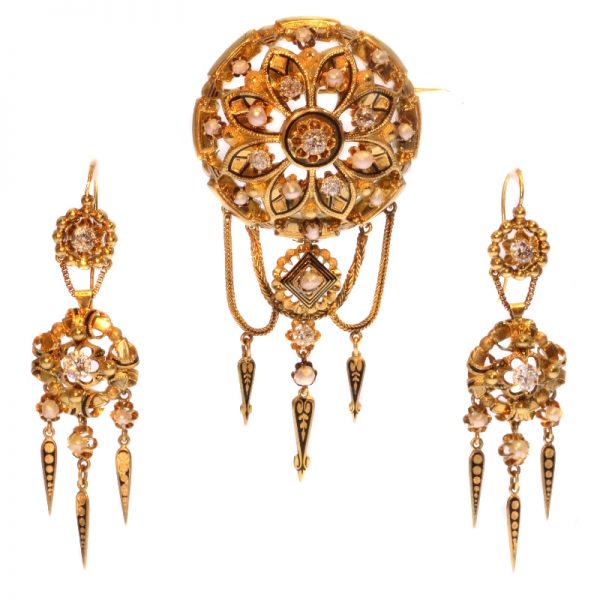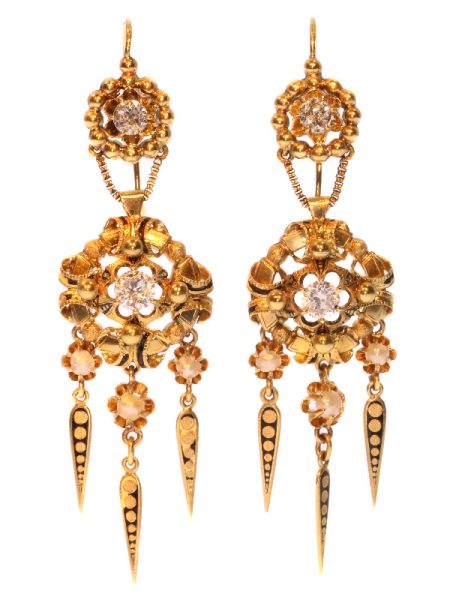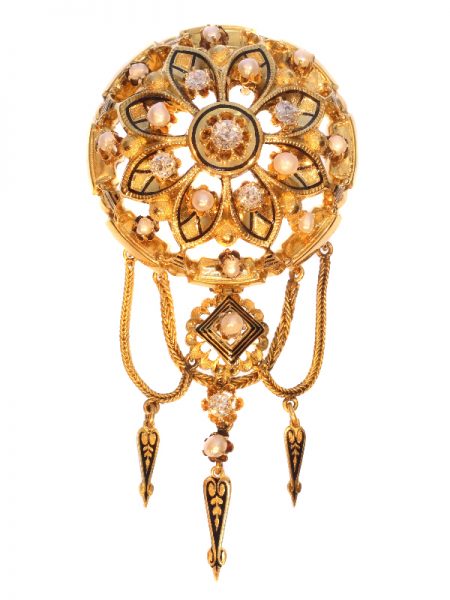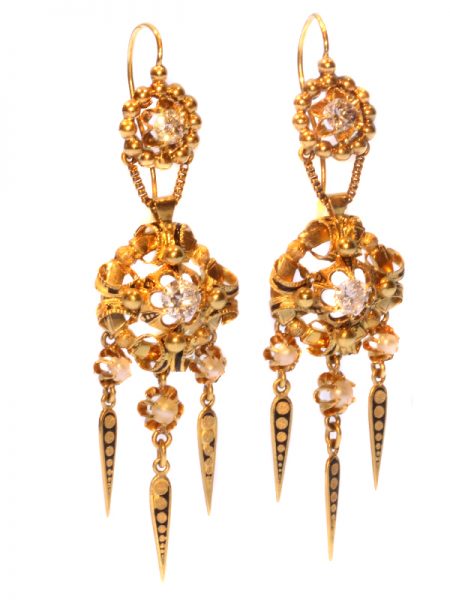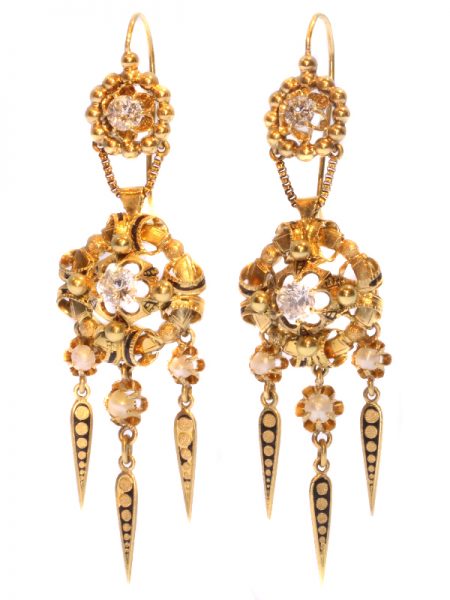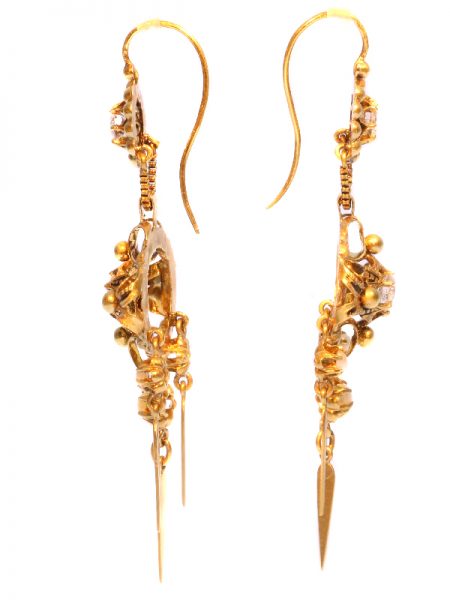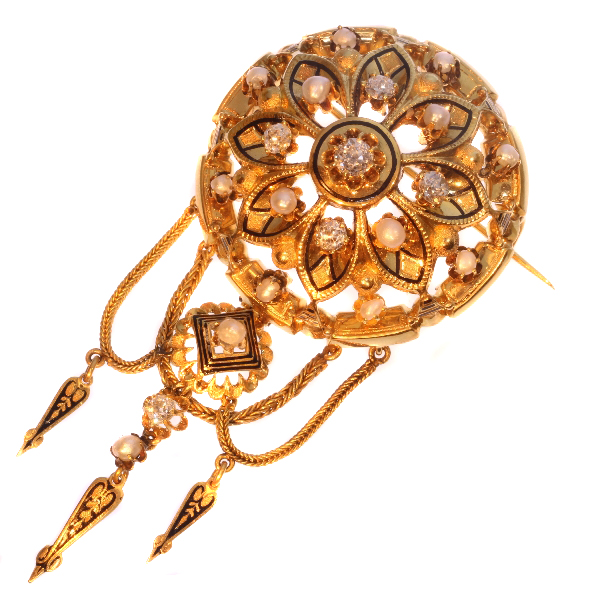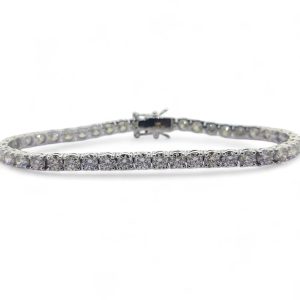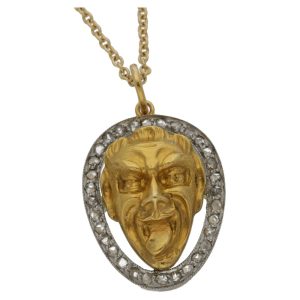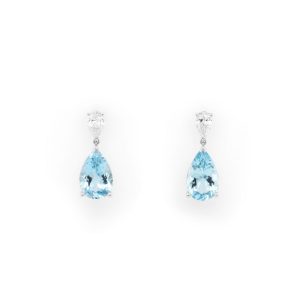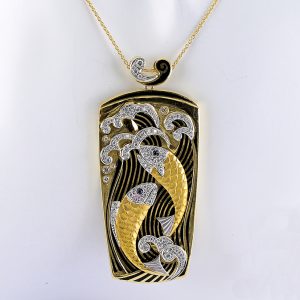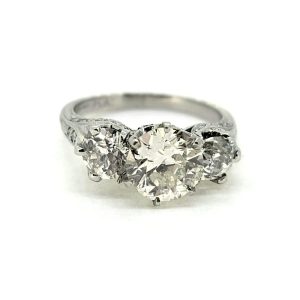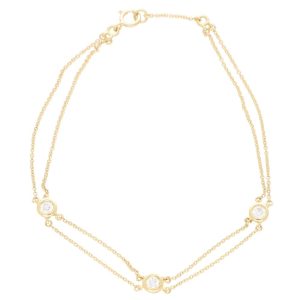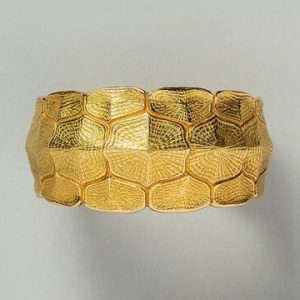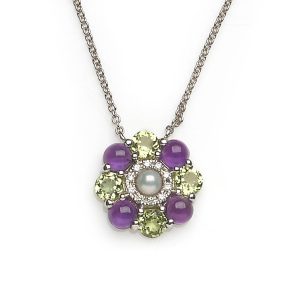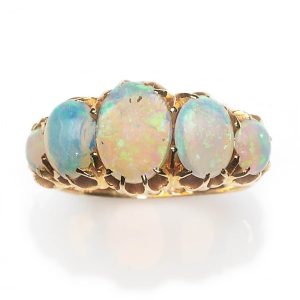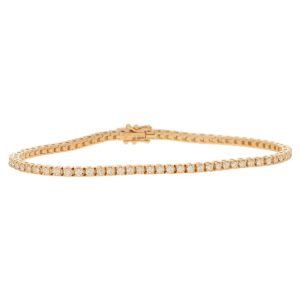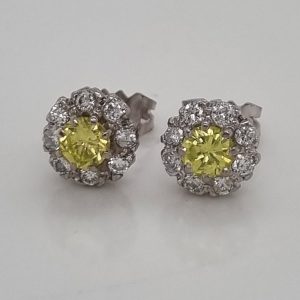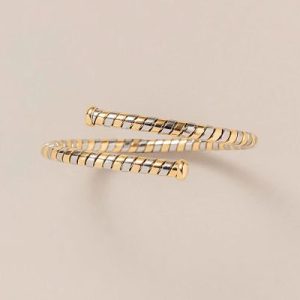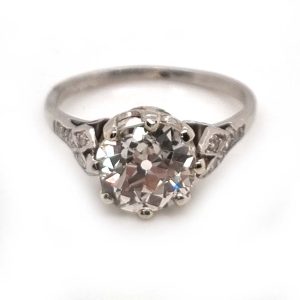Antique Victorian Gold and Diamond Brooch and Earrings Suite
Here we have what we call in our trade, a parure or suite. A parure is a matching set of jewellery. This parure consists of an outward curving or better a “bombé” brooch and a pair of gold earrings both in 18ct yellow enamelled gold and meant to be worn together.
In the brooch, a crown-set diamond gleams as the heart of a flower with eight petals embellished with a gothic pattern in black enamel and with alternately a pearl and a diamond. From the halo of this openwork brooch, foxtail chains with dangling arrowheads drape down to a pearl top on a fringed enamelled pyramid, suspending its own diamond, pearl and arrow.
The pair of openwork earrings are quatrefoil shaped, which refers to the four curling lobes upholding a crown-set diamond and suspending three pendulous pearls and arrows. As if being little pendants, a box chain joins the earrings to their surmounts consisting of a crown-set diamond in between of a circle of gold grains.
Antique jewellery object group: parure, earrings and brooch
Condition: excellent condition
Country of origin: France
Style: Victorian – Victorian decorative arts refers to the style of decorative arts during the Victorian era. The Victorian era is known for its eclectic revival and interpretation of historic styles and the introduction of cross-cultural influences from the middle east and Asia in furniture, fittings, and Interior decoration. Victorian design is widely viewed as having indulged in a regrettable excess of ornament. The Arts and Crafts movement, the aesthetic movement, Anglo-Japanese style, and Art Nouveau style have their beginnings in the late Victorian era.
– See also: Victorian or more info on styles
Style specifics: The Romantic Victorian Period – Experts divide the reign of Queen Victoria, also called The Victorian era (1837 – 1901) into three periods of about twenty years each; The Romantic Victorian Period (1837 – 1860), The Grand Victorian Period (1860 -1880), and the Late or Aesthetic Victorian Period (1880 – 1901).
We consider this to be of the Romantic Victorian Period. This period covers the coronation of Victoria as Queen of Great Britain and Ireland, and her marriage to King Albert and their love, their devotion to their marriage and to their country are the sources of inspiration for this period. The jewels of this period are made of intricate carvings, special techniques where the enamel is subtly worked. These techniques allowed to give the jewel a certain opulence with less precious metal needed. As precious metals were really rare at that time. Highly favoured (semi-) precious stones in this period are amethyst, coral, garnets, seed pearls and turquoises. The connotation is obviously sentimental, symbolic and romantic with reminiscent Gotic and/or Renaissance patterns and an abundant use of motifs like anchors, birds, branches, crosses, hearts and snakes.
Period: ca. 1850
Material: 18ct yellow gold
Technique: Enamelling is an old and widely-adopted technology. The ancient Egyptians applied enamels to pottery and stone objects. The ancient Greeks, Celts, Russians, and Chinese also used enamelling processes on metal objects. Enamel is the colourful result of fusing powdered glass to a substrate by firing, usually between 750 and 850 degrees Celsius. The powder melts and flows and hardens to a smooth, durable vitreous coating on metal, glass or ceramic. According to some sources, the word enamel comes from the High German word smelzan (to smelt) via the Old French esmail. Used as a noun, “an enamel” is a usually small decorative object, coated with enamel coatings, such as a champlevé or a cloisonné (different techniques).
Extra information: Parure – A set of jewelled ornaments decorated en suite or made of the same variety of gemstone, and intended to be worn at the same time, such as a necklace, bracelets, brooch, and earrings (and sometimes an aigrette or sévigné). The modern term is sometimes a ‘suite’. Less than a full set is called a ‘demi-parure’. Such assemblages of jewellery became fashionable in the second half of the 16th century and were revived in the 19th century; they were made with diamonds for formal wear and other gemstones for daytime wear. Some were made of Berlin Iron jewellery.
Diamonds: Ten old European cut diamonds with a total estimated weight of approx. 1.60 crt. (approximate colour and clarity: H/I, si/i)
Note: All diamond weights, colour grades and clarity are approximate since the stones were not removed from their mounts to preserve the integrity of the setting.
Total diamond weight: approx. 1.60 crt.
Precious stones: 16 half seed pearls
Birthstones: Diamond is the birthstone (or month stone) for April and pearl for June.
Hallmarks: The French control mark for 18ct gold representing a horse’s head that was in use in France from about 1838.
Dimensions: Brooch: width 3,70 cm (1,46 inch), height 7,60 cm (2,99 inch); earrings width 1,80 cm (0,71 inch), height 6,40 cm (2,52 inch)
Weight: 23,30 gram (14,98 dwt)
Product SKU
AD15033-0112
Sold
Sold Out

